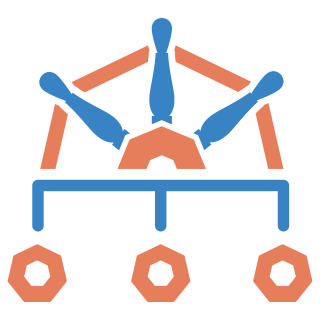Kubernetes Day-2 Operations
Once Kubernetes is set up and applications are running, the real challenge begins: Day-2 operations
Managed Kubernetes Namespaces without maintaining an entire cluster and dozens of tools.
> install kspacr CLI on MacOS
$ brew install kspacr
> Connect CLI with kspacr Account
$ kspacr auth login
> Fetch kubeconfig of kspacr Namespace
$ kspacr ns connect
> Install a Helm chart
$ helm install ...
> And kubectl works too
$ kubectl logs ...










fully managed Kubernetes clusters, so you don’t need an expert for setup and maintenance of clusters, configuration, network, nodes, ...
don’t think about provisioning, configuring, or scaling servers, node groups, and server pools. Just set resource limits on your Namespaces.
kspacr is your Platform Engineering team taking care of setup and all the typical day-2 operations, so you don’t have to hire the experts
kspacr goes beyond clusters. It provides an entire Kubernetes Platform for enhanced observability & security and a superior developer experience
Less manual ops, reduced waiting, faster iterations. Increase developers' velocity with secure Self-Service Namespaces
Smart canary deployments run rollouts in stages. They detect issues fast and automatically roll back when a release shows abnormal behavior.
Clusters have a hardened configuration, with many security settings enabled by default. The Admission Controller automatically blocks the deployment of misconfigured resources.
When your applications experience high load, you simply add more Pods to accommodate the traffic, such as with Kubernetes’ Horizontal Pod Autoscaling (HPA).
Gain full visibility into your Kubernetes environment. Our integrated monitoring and logging tools provide real-time insights into your applications.
Our pricing model simplifies billing forecasts and attribution because it's based on resources requested by your Namespaces.
You can transition to any other Kubernetes platform at your convenience, ensuring your operations remain flexible and adaptable to your evolving needs.
set up a Kubernetes cluster in your own Cloud account and connect it to kspacr. We will run your Kubernetes Platform and manage the DevOps Tools puzzle.
The fully managed experience.
More flexibility, more responsibility.
Bring Your Own Cluster
"Our team is spending too much time managing Kubernetes infrastructure instead of focusing on developing our core product.
We need a Platform that takes care of the heavy lifting.”
"How do I get my app running to Kubernetes? What should we do with all these environment variables and secrets? ... I have no idea.”
"Allll these updates and security patches for Kubernetes and its components! It's hard to ensure our clusters are always up-to-date and secure."
"We lack the in-house expertise of a Platform Engineering team. We need a solution that provides built-in observability features to monitor and troubleshoot our applications."
"We're finding it difficult to manage access and permissions in Kubernetes with RBAC.
Is there a service to help create a more streamlined and secure approach?”
"We are practicing DevOps, and every team is doing things slightly differently. Do they properly consider Reliability, Security, and Cost?
A more standardized approach would make auditing a lot easier!"
"Ahhhh ... We've had instances of misconfigured Kubernetes manifests leading to security vulnerabilities. We need a solution that can help us avoid these pitfalls."
"Choosing the right platform components for our Internal Developer Platform is like solving a 1000-piece puzzle. Which tools provide great value and work well together?”
"We're seeing high costs from under-utilized clusters, and all these Platform services cost more than the running the application itself.
Is there a way to better manage our resources and optimize our spending?”
Our thoughts about Kubernetes, Developer Experience, DevOps and Platform Engineering...
Once Kubernetes is set up and applications are running, the real challenge begins: Day-2 operations
Explore canary deployments, how they work, their benefits, and how to implement them in Kubernetes using Flagger.
The Kubernetes 1.27 release, dubbed "Chill Vibes," introduces various enhancements and security updates, providing users with a more versatile, secure, and improved platform.